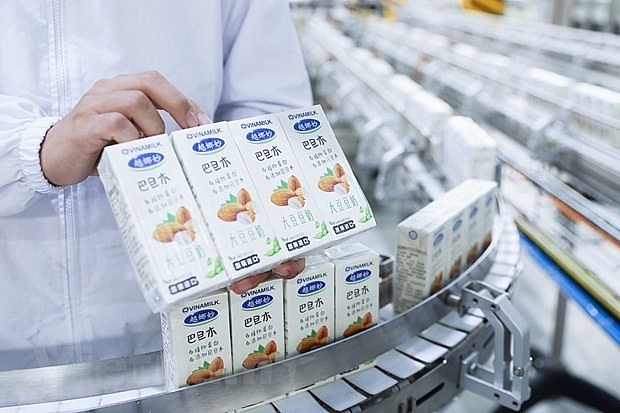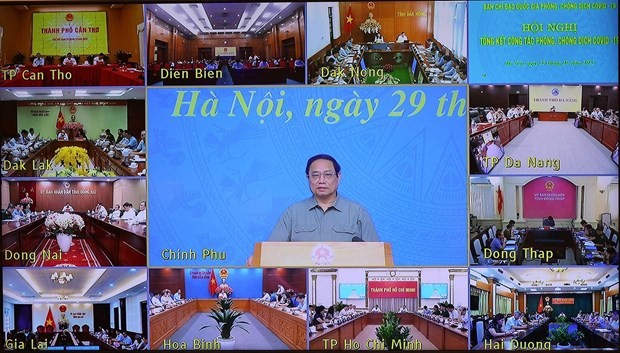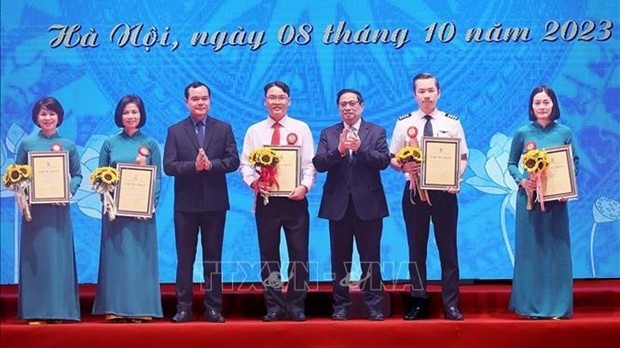
Viet Nam’s dairy industry reaches out to the world
Latest
 |
| Vinamilk has shipped nut milk products to China. (Photo: VNA) |
The Ministry of Industry and Trade said Viet Nam shipped 302.7 million USD worth of dairy products in 2020, a 10.5 percent increase against 2019. This was the first time the country’s dairy export revenue has exceeded 300 million USD.
According to the Vietnam Dairy Association (VDA), many enterprises have spent heavily on advanced technologies and developed cattle farms under Global GAP, VietGAP, and organic standards to improve productivity and food safety and to diversify products.
After showing their capacity to supply foreign markets with quality products, Vietnamese enterprises have enjoyed strong sales in the recent time. Despite the pandemic, Vinamilk and Vinasoy exported products to major markets such as China, the Middle East, the Republic of Korea, and Japan.
Vinamilk signed a deal worth 20 million USD with a distributor in Dubai last year to supply dairy products, and also shipped its nut milk and milk tea to the Republic of Korea. Meanwhile, Vinasoy’s products have been sold on 11 e-commerce platforms and at six supermarket chains in China.
The VDA said the dairy sector earned more than 113.71 trillion VND (4.95 billion USD) in revenue in 2020, or 5 percent higher than in 2019, thanks to an abundance of raw materials, high demand, and solid maintenance of distribution channels.
Securities firms expect that the dairy sector will grow some 7 percent in 2021 on the back of an increasing need for high-value products.
Exports exhibited robust signs in the first two months of the year, with ten containers of Vinamilk’s nut milk and five containers of sweetened condensed milk shipped to China.
Meanwhile, the Chinese General Administration of Customs (GAC) recently announced the granting of transaction codes to two Vietnamese companies to ship dairy products to the country, the Ministry of Industry and Trade’s Department of Asia-Africa Markets has said.
Accordingly, the FrieslandCampina Hanam Company Limited is allowed to ship pasteurised and fermented milk, while the FrieslandCampina Vietnam Company Limited can export pasteurised and fermented milk, sweetened condensed milk, and other dairy products.
China has so far granted transaction codes to nine Vietnamese companies and plants. Others include TH True Milk, with sterilised and modified milk, Hanoimilk, with fermented milk, Bel Vietnam, with cheese, Nutifood, with sterilised, modified, and flavoured fermented milk, Vinamilk’s three plants, with condensed milk, flavoured fermented milk, sterilised and modified milk, and sweetened condensed milk, and many other kinds of condensed milk products.
Besides China, Viet Nam’s dairy products have also won over customers in the US, Japan, the Republic of Korea, and the Middle East.
Dairy producers said they have paid due regard to improving product quality and packaging design, to better meet customer requirements.
TH True Milk, Vinasoy, and Moc Chau Milk are all making investment in material zones, plants, and state-of-the-art technologies to produce international-standard products.
According to Vinamilk International Business Director Vo Trung Hieu, together with strong markets like the Middle East, Southeast Asia, and the US, it is also promoting exports to markets of potential such as the Republic of Korea and several countries in Africa.
Entering into fastidious markets has affirmed the position of Vietnamese enterprises in the world’s dairy industry, he added.
























